Historic Leeds – Photos from the Historic England Archive

With photographs taken from the Historic England Archive, a unique collection of over 12 million photographs, drawings, plans and documents covering England’s archaeology, architecture, social and local history, these images show the city of Leeds as it once was, from its streets, squares and parks to its mills and factories.
The self-proclaimed ‘Capital of the North’ has come a long way since receiving its first charter in 1207. From its early developments during the Industrial Revolution, it became a major area for the production of wool, engineering and printing. Today, with its legal and financial services, it is a prosperous contender with London. Leeds is also a city with a wide variety of entertainment, arts, culture and history, as well as having a thriving university.
The Corn Exchange, 1991
In 1860 a new corn exchange was proposed that was to be designed and built along the lines of the state-of-the-art Edinburgh Corn Exchange. The Edinburgh exchange featured a large central space where farmers and corn factors transacted their business. The version at Leeds featured a large central space surrounded by fifty-six offices accessed by arched doorways; some of them opened onto the street, while others opened into the interior of the building. Corn was stored in the huge basement area. It was also used as the headquarters of the fire brigade for a while.
The Half Roundhouse, Wellington Road, 1993
Originally a heavy engineering repair shed for the Leeds & Thirsk Railway from 1847, it is now commercial storage premises. From 1908 it was home to the Leeds Motor Co. Leeds & Thirsk Railway later amalgamated with the Leeds & Selby and the York & North Midland to become the North Eastern Railway. The roundhouse was designed with a single entrance track with twenty stabling bays radiating around a central turntable, measuring approximately 12.75 metres in diameter. Of all of the locomotives built at the roundhouse only one survives: the Areolite, which was built and kept here in 1851 by Kitson’s of Leeds. It is presently at the National Railway Museum in York.
County Arcade, Briggate
The buildings and conditions in what was to become the beautiful Victoria Quarter could not have been more different before 1877. Vicar Lane was full of slaughterhouses, butchers, fruit and vegetable stalls, while the western end of County Arcade was the Bazaar. This was a two-storey emporium; the lower level sold meat and the upper level contained fancy goods and a haberdashery. Men and women were segregated – men downstairs, women upstairs – with no chatting, drinking or eating behind the counters, and no bonnet-wearing by the women.
Leeds Town Hall, 1994
Before the construction of the town hall, the moot hall (which had stood in the middle of Briggate) had performed the city’s civic and judicial function from 1615 until 1813. It was rebuilt in 1710/11 with a gable featuring a statue of Queen Anne. A pillory and stocks stood in front of the building as a caution to all. But with the rise in the city’s population, the moot proved inadequate and so a new courthouse was built. The moot hall found itself somewhat redundant as a result and was demolished in 1825.
The courthouse took over the role of the General Post Office when the town hall opened. It was home to a number of municipal departments, a courtroom, a police station – otherwise known as ‘central charge office’ – that was comprised of a police muster room, thirteen prison cells known as the Bridewell, and accommodation for the jailer and his wife.
The Old Bear Pit, Cardigan Road, Headingley, 1983
The old bear pit had opened in 1840 for the Leeds Zoological and Botanical Gardens but closed in 1858 due to financial difficulties. The gardens opened in 1840 and visitors paid an entrance fee of 6d to view the exotic plants – some of which may still remain – and birds and animals. Spiral staircases in the stone towers were climbed to access a platform from which the brown bear in the circular pit below could be safely observed. The gardens were laid out with ornamental flower beds, shrubberies and winding paths. There were two ponds with islands and a fountain. A conservatory displayed unusual plants from other lands. As well as a bear, there were also monkeys, swans and an eagle.
Armley Public Library, 2005
The library opened to the public in 1902 as the first purpose-built library in Leeds. A lending department, reading room and separate ladies’ room were provided. Later, the basement area became a children’s library. Library users were as strictly controlled as the book stock: a notice stated that ‘ticket holders only admitted’. Armley Library had a profound influence on Alan Bennett, who said: ‘Libraries have to be local, the early part of a child’s reading life is vital.’ ‘Having learned to read,’ Bennett wrote in the London Review of Books, ‘there was nothing in the house on which to practise my newly acquired skill’ and so Armley Library in Leeds became a weekly outing for his parents and their two sons. His early favourite was Dr Dolittle.
The Boys’ School at Fulneck Moravian Settlement, Pudsey, 2007
This brick-built Boys’ School is the former Brethren’s House. It was established in 1744 and is named after Fulneck (Czech: Fulnek), the German name of a town in Northern Moravia, Czech Republic. It came about when members of the Moravian church settled at Fulneck in 1744. They were descendants of the old Bohemian/Czech Unity of the Brethren, banished in Bohemia after 1620 and who, in 1722, had found refuge in Saxony on the estate of Nicolaus Ludwig, Count von Zinzendorf. Their banishment was due to forcible re-Catholicisation imposed on the Czech lands by Habsburg emperors. By 1748, soon after settling at Fulneck, housing, a school and a chapel were built. In 1753 and 1755 separate boys’ and girls’ schools were opened. These were combined into one school in 1994.
Bramley Baths, Broad Lane, Bramley, 2008
Bramley Baths is the last remaining Edwardian bathhouse in Leeds and is Grade II listed. It first opened as a pool and public bathhouse in 1904, enabling local residents to wash, swim and use the Russian steam baths – fashionable with the Edwardians as a healthy pastime. Originally a steel foundry, the building’s chimney can be seen from across Leeds. When Bramley Baths was threatened with closure, a group of local residents campaigned successfully to take over the management. Ownership of the pool transferred to the organisation on 1 January 2013.
The Children’s Ward in Leeds General Infirmary
The General Infirmary at Leeds (its old official name) goes back to June 1767, when an infirmary ‘for the relief of the sick and hurt poor within this parish’ was set up in a private house in Kirkgate. Four years later the General Infirmary’s first purpose-built building opened near City Square in Infirmary Street on the site of the former Yorkshire Bank. The five founding physicians were all graduates of the University of Edinburgh Medical School. LGI has continued to expand ever since, resulting initially in the move to an impressive new site on Great George Street in 1869.
Whitelocks Alehouse (1715), Turk’s Head Yard, off Briggate
The Grade II-listed Whitelock’s Alehouse first opened its doors in 1715 as the Turk’s Head, located, fittingly enough, in Turk’s Head Yard. The pub was ideally placed to cater for the traders and customers thronging Briggate market. It is Leeds’ oldest surviving pub. In 1867 John Lupton Whitelock, a flautist with the Hallé and Leeds Symphony Orchestra, was granted the licence of the Turk’s Head. The Whitelock family bought the pub in the 1880s and in 1886 completed a refurbishment, which has left us with the elaborate décor we can still see and enjoy today – including the long marble-topped bar, etched mirrors and glass.
In the mid-1890s the pub was rebadged as Whitelock’s First City Luncheon Bar. In 1897 John Lupton Whitelock installed electricity, including an exciting new revolving searchlight at the Briggate entrance to the yard. Trick beer glasses in which a sovereign was placed ensured the punter got not the money, but an electric shock.
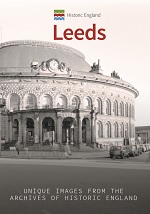
 ‘Historic England: Leeds’ by Paul Chrystal is published by Amberley Publishing, £14.99
‘Historic England: Leeds’ by Paul Chrystal is published by Amberley Publishing, £14.99
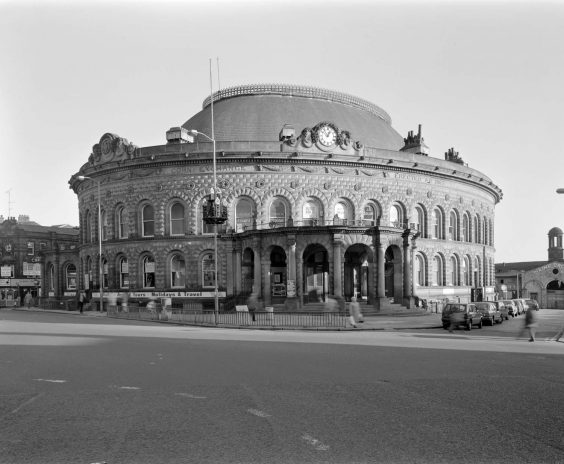

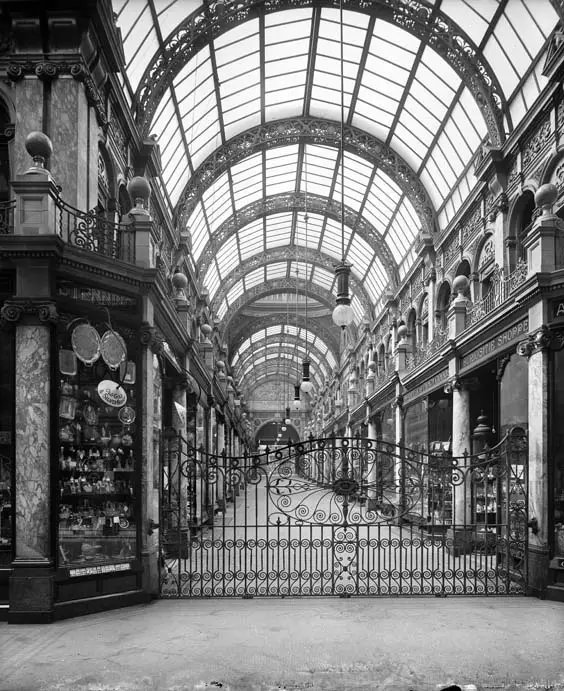


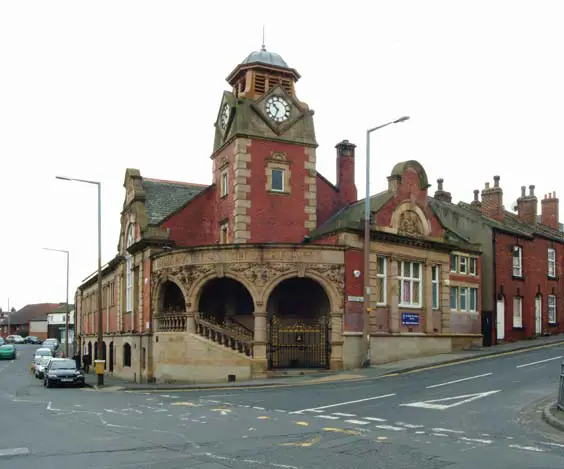

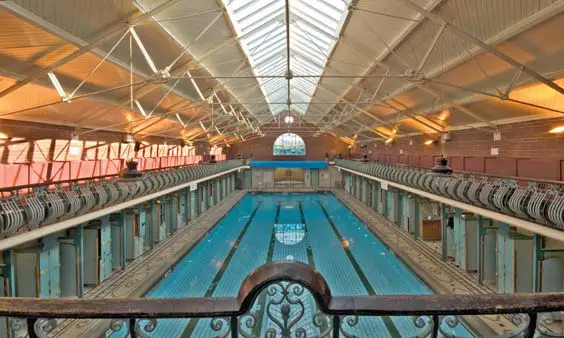












Yes, I remember the Aircraft Factory during the war and “hidden” by a grass top el al, The basic Building appeared 4/5ths. underground. I used to watch the Lancasters take off….just missing the top of houses nearby….I was 7yrs old,in 1943.